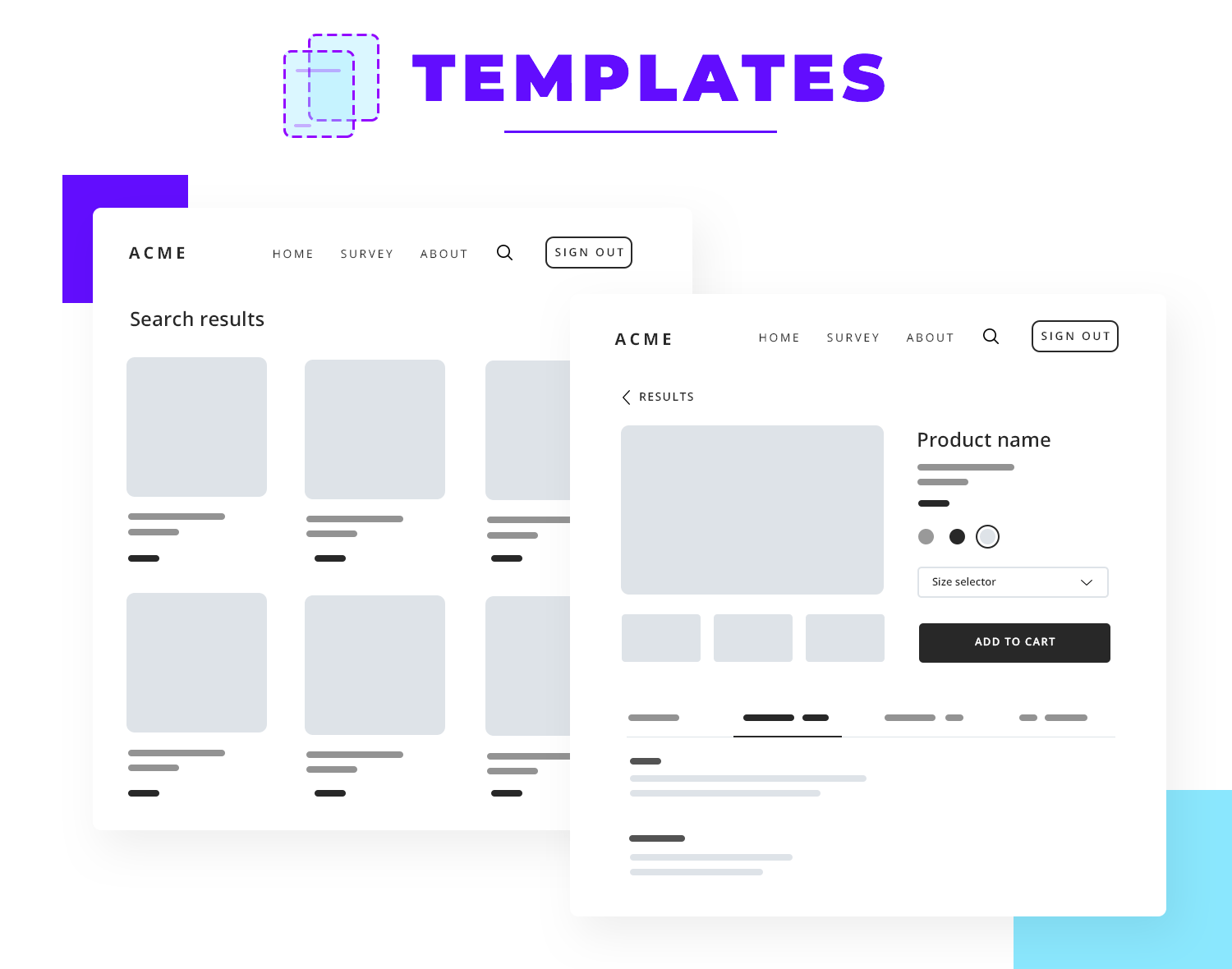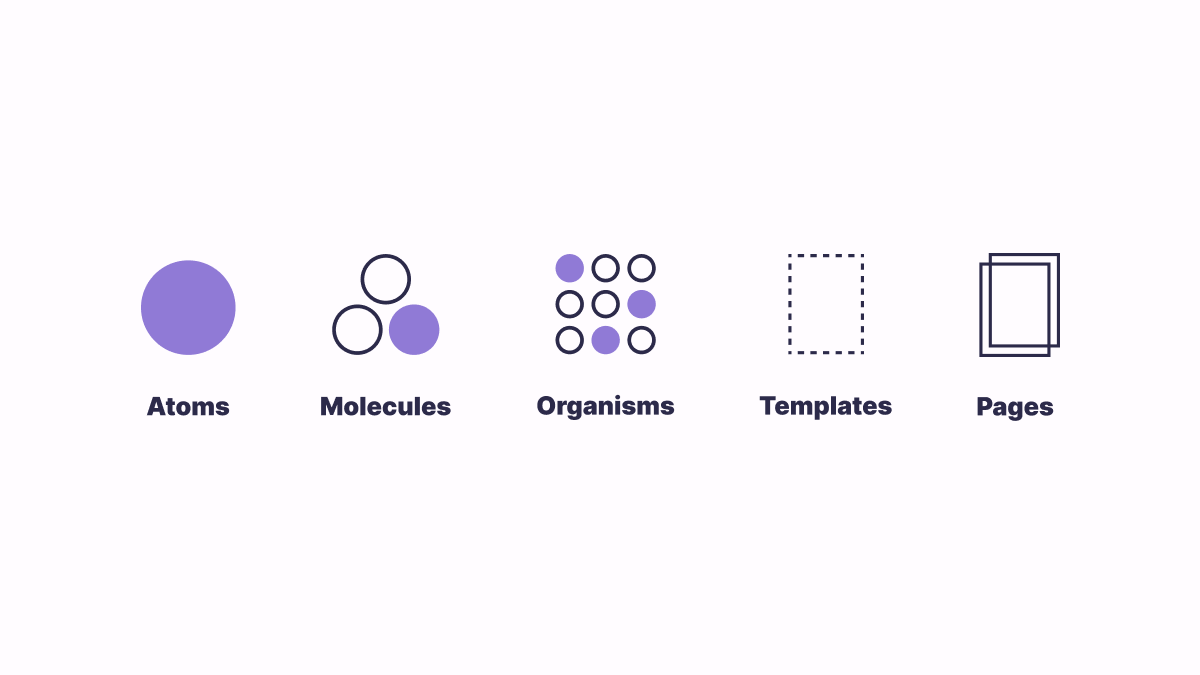Table Of Content

Build components to be as reusable as possible between sections of the app. Extract any duplicated component logic into reusable atoms/molecules. A core goal of atomic design is developing reusable interface components. React components are already designed to promote reusability through properties like composability and isolation.

Final Thoughts on Atomic Design with React
Atomic design is an interface design methodology consisting of five distinct stages working together to create deliberate design systems. Organisms, then, are entire sections that can stand on their own and combine a set of molecules into a component of their own. The page stage is essential as it’s where we test the effectiveness of the design system. Viewing everything in context allows us to loop back to modify our molecules, organisms, and templates to better address the real context of the design. A client might not be terribly interested in the molecules of a design system, but with organisms we can see the final interface beginning to take shape. Templates are page-level objects that place components into a layout and articulate the design’s underlying content structure.
Just what exactly is Pattern Lab?
This again needs to be made into a component so we can reuse it later, so select all of the included elements, right-click, and select “Create Component” or press CMD + Shift + K (on a Mac). That means that while templates are the scaffold of what your pages could contain, the page itself is exactly what that page will look like with customized content. You can see below we’ve taken the same page template as above, but changed the content below the hero, which gives us an entirely different feeling page. Here’s a hero, a common component of every site that combines our rich text and button molecule with a featured image background. I’m really excited to dive in deeper and develop more tools and thoughts around these concepts. Atoms can also include more abstract elements like color palettes, fonts and even more invisible aspects of an interface like animations.

Molecules: Designing our content area
It increases the likelihood that you will perfect your design craft. The more you understand what makes users excited about your websites, the more you can refine the elements. To better understand how to execute atomic design strategies, you need to unpack the facets of a web page with atomic design terminology.
Atomic design is for user interfaces
These frameworks’ popularity is a testament to the fact that designers and developers are seeking solid ground to stand on in this ever-complex web landscape. As designers quickly discovered, creating multi-device web experiences involves a lot more than creating squishy pages. Each individual piece of an interface contains its own unique challenges and opportunities in order for it to look and function beautifully across many screen sizes and environments. Establishing design atmosphere early is critical to a project’s success, which is why designers have found ways to facilitate these important conversations without having to generate full mockups.
Atomic Layer Deposition: The Future of Computer Hardware - Lehigh University
Atomic Layer Deposition: The Future of Computer Hardware.
Posted: Fri, 05 Apr 2019 07:00:00 GMT [source]
Structuring our work simplifies our solution, speeding up future changes, with fewer issues. A template lets us create a page while saying these bits are going to be left up to the content editors to lay out. Many websites are built with content management systems that take templates and allow teams to add content dynamically to specific pages. Atomic design gives us the ability to traverse from abstract to concrete.
Templates are effective because they ensure components of a visual identity system are crafted to look and function together. For example, a search icon and an input box are two separate atoms. Put them together to form a search box, and you've got yourself a molecule.
Now let’s move up to more complex organisms like the website’s header, which looks a little something like this:
” The issue with terms like components and modules is that a sense of hierarchy can’t be deduced from the names alone. Atoms, molecules, and organisms imply a hierarchy that anyone with a basic knowledge of chemistry can hopefully wrap their head around. When designers and developers are crafting a particular component, we are like the painter at the canvas creating detailed strokes. It’s necessary to zero in on one particular component to ensure it is functional, usable, and beautiful. But it’s also necessary to ensure that component is functional, usable, and beautiful in the context of the final UI.
It can also be extended to showcase accompanying CSS and JavaScript code. The multitude of devices now accessing the web has forced designers to re-embrace the intrinsic fluidity of the medium. Thankfully, techniques like responsive web design allow us to create layouts that look and function beautifully on any screen. At this stage in the game the smaller patterns are already constructed, so all the template needs to do is pull them into the context of a page layout and give them unique names. It is a well-documented design system by Salesforce, which is popular cloud-based software that provides various services like marketing automation, CRM, analytics, etc. This is an open-source framework that prioritizes creating business applications.
Molecules demonstrate how atoms can interact and combine into usable microcomponents. These molecular components start having defined properties like size, shape, positioning, etc. Once again, the design team can benefit from the flexibility of Atomic Design. More often than not, the team will focus on a molecule or organism on the page that doesn’t have the desired effect. It represents a specific point in the past that can be revisited and then implemented on the page. Sometimes, stakeholders will have a change of heart once they see it in all its glory with all the details.
But, of course, the web is much more diverse than a mobile view, a tablet view, and a desktop view. To help designers better consider the entire resolution spectrum when testing their responsive designs, I created a tool called ish. You must be aware of Airbnb, which is a giant house renting marketplace.










